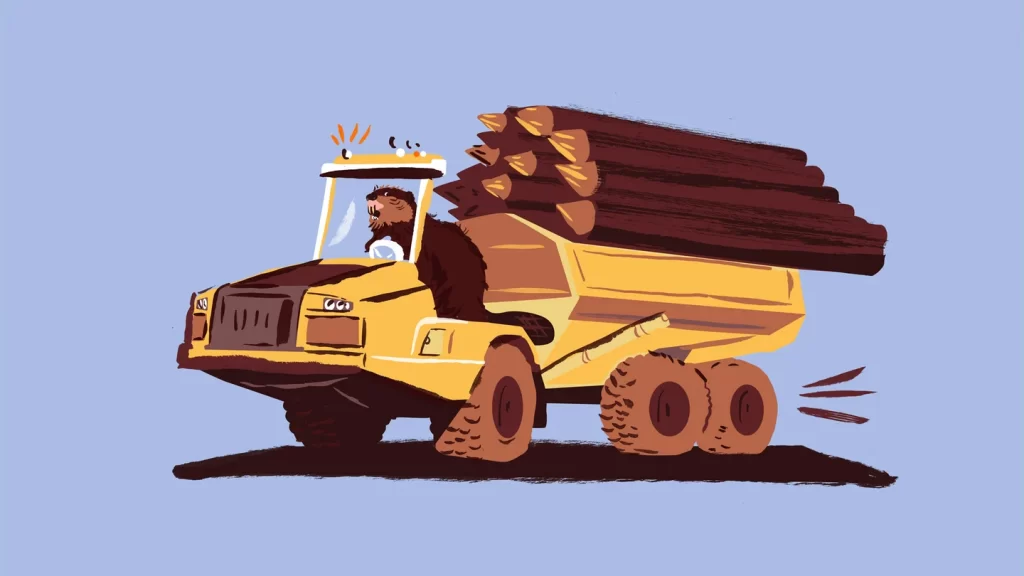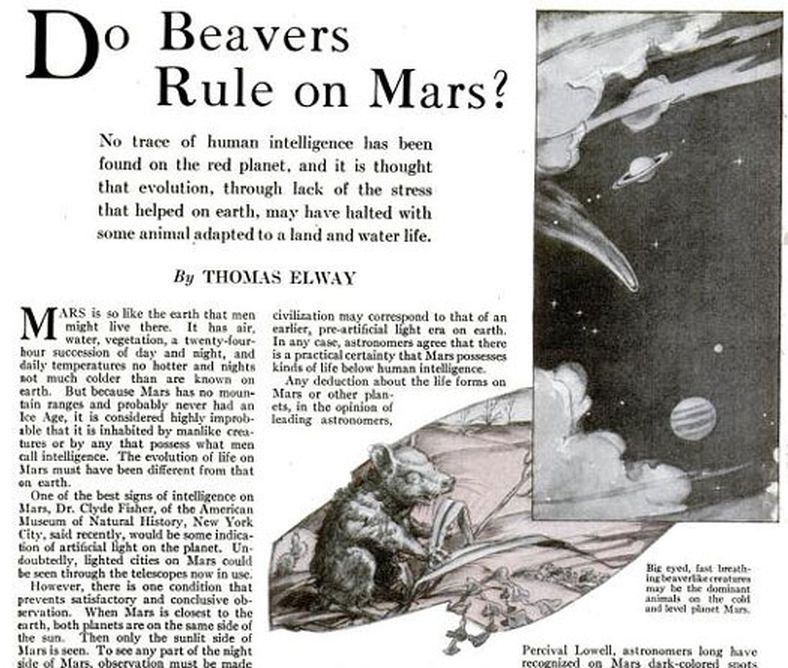Once upon a time, a long, long, time ago, positive beaver articles used to be few and far between. One dropped every other year or so, and I was powerfully happy to see them. Now everybody and his mother seems to have something nice to say about beavers. Even Popular Science wants a seat at the willow table.
Beavers, snails, and elephants are top grads from nature’s college of engineering

Beavers, like humans, shape their ecosystems not just by eating or excreting, but also by building and tearing down. And because of those similarities, the rodents have become North America’s best-known “ecosystem engineers.”
But the scientific idea of ecosystem engineering wasn’t born in a beaver lodge—it came from Israel’s Negev Desert. The pea-size rock-eating snail sticks to the underside of limestone boulders and has a peculiar means of accessing food: It chews through stone to get the lichen living inside. The tiny mollusks then poop out so much of the rock that they literally build the desert soil. Measurements taken by ecologists in the 1980s showed that their gritty feces add as much sediment in the course of a year as windblown dust.
When one of those ecologists, Clive Jones of the Cary Institute of Ecosystem Studies in New York, visited the desert in 1987, he saw that snails weren’t the only animals shaping the landscape. Most of its organisms, from animals down to bacteria, changed how water flowed in the arid environment. Porcupine pits and anthills trapped runoff. Bulbed plants broke up hard-packed earth, trapping moisture. Colonies of microbes covered slopes in waterproof sheets.
And beavers! Don’t forget the beavers, Doing their part to keep North America Green and lush. I mean snails and oysters are cool and all, but I don’t see any one rushing to form the nonprofit “Worth A Shell” any time soon.
Jones and his colleagues coined the term ecosystem engineering in 1994 to connect the processes they saw in that desert to similar ones all over the world. Kelp forests create calm nurseries for fish and crabs on coasts. Terrestrial forests collect water. In all these cases, the actions, or even the body of an organism itself is reshaping the world—and not as part of a food chain. An elephant eating leaves isn’t engineering—but as soon as it rips down a tree, it is.
Since the idea entered the scientific mainstream, ecologists have debated what counts as an engineer, given that almost any organism could conceivably qualify for the definition. Does an action have to be intentional, as beavers’ dam-building appears to be? Does it need to shape the lives of other organisms immensely?
Jones says no to both. From the perspective of an ecologist, it doesn’t matter whether an elephant means to rip up a bush or eat a specific plant—the fact is that it does. And the effect doesn’t need to be earth-shattering. An animal’s shadow is the most trivial example of engineering. “No other organism cares about the ephemeral shadow caused by the cat walking outside my window,” Jones says. But the shadow has the same type of effect as a beaver’s dam in that they both change the heat, light, water, and air that other organisms depend on.
Well I believe it was Frances Backhouse who first called beavers “unintentional philanthropists”
“To understand how an ecosystem works, you need to take all those things into account,” Jones says. If you think about beavers’ eating habits—consuming the leaves and soft inner tissue of wetland trees—you’d assume they were an engine of environmental destruction, leaving clear-cuts in their wake. Instead, studies show that these rodents create stunningly biodiverse wetland habitats. Similarly, tens of millions of bison once roamed from what is now Louisiana to the Canadian boreal forest, engineering the plains differently from the cattle that replaced them. Bison, unlike cattle, plow snow on the winter prairie and wallow up huge sand pits in the summer, helping create grasslands that support more birds and native plants.
Understanding how species alter landscapes isn’t just an intellectual exercise—it’s critical for figuring out how to preserve fast-disappearing habitats, or how to restore lost ones. “Humans can imitate the way in which ecosystem engineers do their work,” Jones says. “Of course, why bother to build a wetland when you can conserve beavers, and they’ll do it for you?”
Of course beavers need most for us to get out of their way and stop bothering them. They need for us to appreciate the changes they make and stop complaining all the time. Still, as nice as it is to read this article in popular science it is still only my second favorite.







































